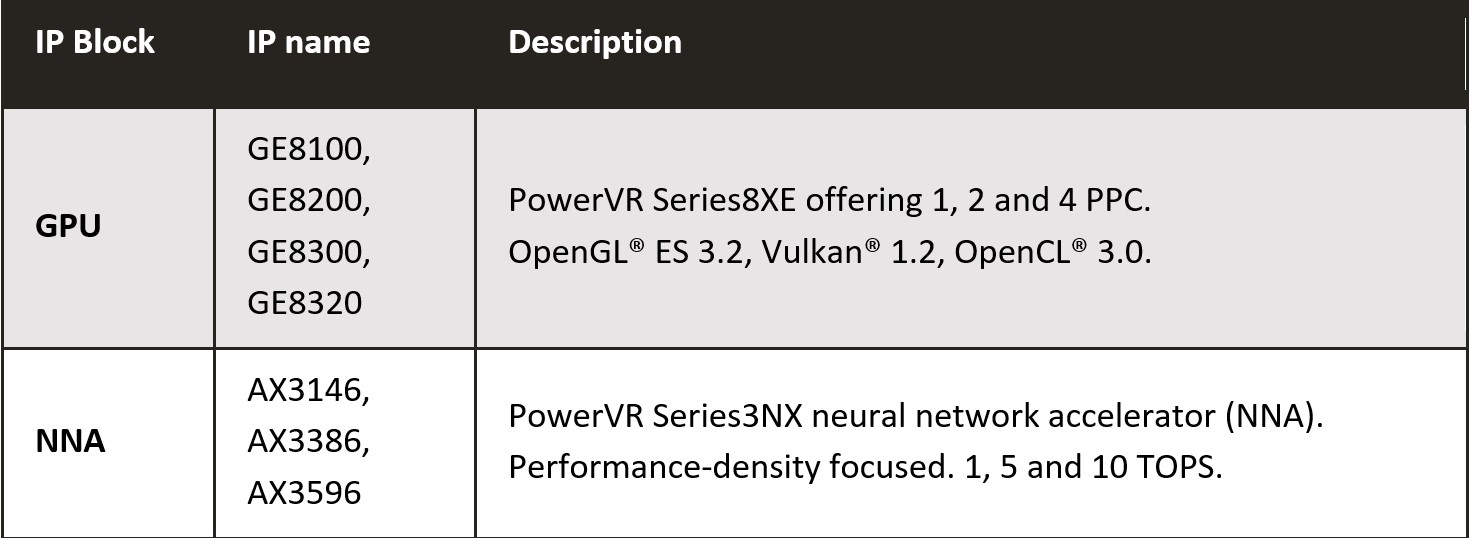- 18 June 2022
- Jim Wallace
Today, three technology trends are driving the future of the semiconductor industry. The first is the move to open-source, which is fast becoming the new standard for producing high-quality solutions, enabling designers to focus on their differentiation and innovation.
Next, is the growth of smart applications for industrial and the IoT markets, which are increasing the demand for cost-effective AI, compute, and HMI silicon. Specifically, these markets are looking for graphics and AI silicon in an area-efficient footprint with an improved performance/cost balance.
Third, there is the rapid expansion of reliable, high-speed connectivity to the edge.
All are providing new opportunities for companies building innovative hardware solutions for emerging and established applications.
Addressing these opportunities presents several challenges to semiconductor design, with the biggest being time-to-market and cost: over 50% of all designs overrun in both areas. This impacts a successful return on investment and drains funding if platforms fail to meet their launch date windows.
So, what can be done? The answer is Imagination Open Access, which together with our open-source and open partnership initiatives can do much to address these challenges. These initiatives are fundamental to lowering the cost of SoC design.
Let’s take a closer look at Open Access.
What is Open Access and how does it solve these issues?
Whereas open source takes advantage of the power of “collective intelligence”, Open Access is a new business model that builds on this. Open Access takes the best part of open source (where improvements and modifications can lead to lower initial development costs) to provide a low-cost and low-risk route to silicon, with a zero-dollar up-front license.
The Open Access program offers access to a targeted range of silicon-proven IP and software tools, free from initial license costs. As picking up and using IP is complex, support and training are provided through a subscription for expert technical support. This enables support from the same team that enables all of Imagination’s customers to be successful.
Open Access includes IP from our Rogue-architecture-based PowerVR Series8XE GPU, and our PowerVR Series3NX neural network accelerator ranges, which have both been fully verified and proven in silicon.

Open Access does not offer modification rights as part of this program as this would impact time to market, cost and risk – the things a start-up or scale-up is trying to avoid. Users can be assured that Open Access IP and the related tools will work “out-of-the-box”. In addition, by building on the benefits of direct training and engineering support, companies can be sure that Imagination will be with them on their journey to success.
Thanks to Open Access scale-ups that might not have considered developing their own SoCs before can now begin their SoC design with lower capital outlay than previously needed. This model enables project managers to control their development costs with our clear pricing models. The IP is silicon-proven across many markets, enabling designers to innovate with the lowest risk.
What is included and what are the engineering benefits?
Open Access is an exciting new direction for Imagination. We are looking forward to working with customers for whom a low-cost entry point to high-quality, silicon-proven hardware IP, along with a comprehensive support package, will open opportunities. Through Open Access, companies can design high-quality GPU and neural network IP into their product – something that might have been previously unaffordable.
To enable full exploitation of the IP, Open Access also includes:
- a production-quality DDK driver;
- a production-quality tool suite;
- a hardware IP integration documentation and verification environment;
- a synthesis reference flow;
- access to our expert application engineers.
RIOS Lab: Open Access Partnership in Action
While Open Access is now officially available, one start-up has already enjoyed the fruits of having early access: “RIOS” – RISC-V International Open Source Laboratory.
Open Access provided RIOS Lab with a route to quickly designing a RISC-V-based SoC, which was crucial in enabling the company to build its PicoRio 2.0 open RISC-V platform. Thanks to access to silicon-proven IP, with full software support for OpenGL® ES and Vulkan®, that would otherwise have been prohibitively expensive, RIOS Lab is now set to quickly mass-produce its PicoRio 2.0 with commercial foundries. In other words: a real product.
We are of course, always delighted to talk about our work with our partners at events, so our partnership essentially provides a great marketing opportunity for both of us – a significant benefit of joining the Imagination ecosystem.
Everything You Need to Support You
When you choose IP through Open Access you also gain free access to an array of industry-leading tools, from profiling applications that are designed to improve your application performance. You also get free-of-charge access to Imagination’s software development kits (SDKs) including NC-SDK (Neural Compute) and PowerVR (Graphics) SDKs. These enable designers to seamlessly map key AI frameworks to their hardware and build better applications much faster. Open-source drivers for some of our GPUs are also now available.
If you need training and general support you can rely on our developer and partner community, which has lots of material available to download. Our Imagination University Programme is at the centre of this with high-quality academically-proven teaching materials for our courses entitled “Mobile Graphics”, “Computer Architecture & SoC Design”, and “Artificial Intelligence at the Edge”. These award-winning materials are extensive, high quality, well supported, and are already in use at hundreds of universities worldwide. Open for non-profit use at both academic and commercial organisations, it’s a hugely valuable resource based on our IP and SDKs.
Don’t worry if your support needs are more demanding, the Open Access two-year support and maintenance subscription provide up to six man-months of support. This is enough to ensure that you will be able to bring your product successfully to market.
Conclusion
Open Access is a game-changer for SoC design. It reduces the cost of building custom ASICs by offering a zero-dollar license fee for a range of key silicon-proven AI and GPU IPs that work across all CPU types including the RISC-V ecosystem. We’re excited about introducing Open Access and would love to talk to you about your project. Please get in touch now!






